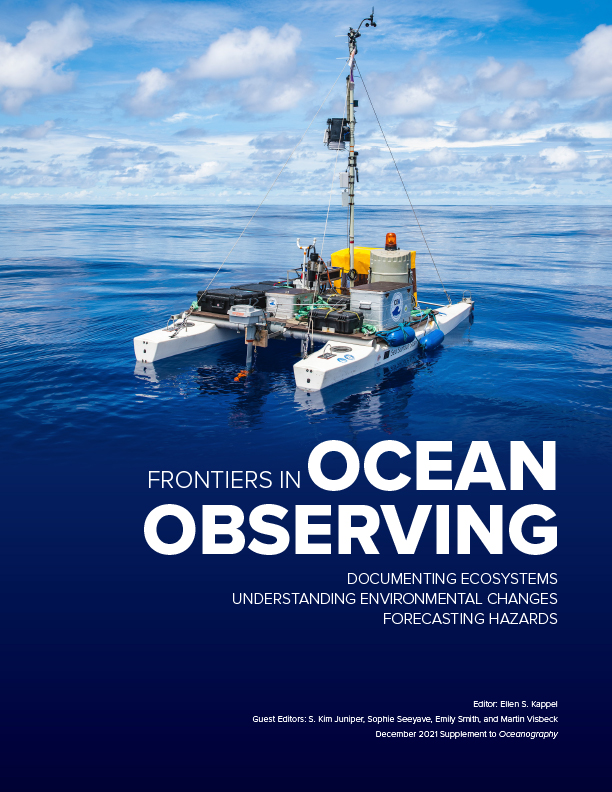Full Text
Through international collaborations and advances in technology, ocean observatories are increasingly capable of monitoring over long time periods. The Porcupine Abyssal Plain Sustained Observatory (PAP–SO), located at 4,850 m depth in the Northeast Atlantic, is one of a small number of oceanic sites that has achieved monitoring to full ocean depths over several decades. It has monitored seafloor ecology since 1985, water column particle flux since 1992, and surface ocean and atmosphere parameters since 2003. The observatory is serviced annually, providing the opportunity to carry out conventional ship-based observations, sensor comparison, and sampling.
From the start, PAP-SO has sought to understand long-term change in the ocean—from surface to seafloor. The initial aim was to study seasonality in the supply of food particles that settle from the surface ocean to the deep-sea floor and their role in structuring the ecosystem. Today, observatory research is increasingly focused on the causes and consequences of multidecadal change and on monitoring essential ocean variables such as ocean temperature and salinity; carbon dioxide, oxygen, and nutrient content, particulate matter; and phytoplankton, zooplankton, and seafloor invertebrate abundance (Figure 1).
|
|
The observatory also provides an excellent testbed for new sensors and platforms. Increasing use of autonomous systems has expanded the spatial extent and temporal resolution of observations. Autonomous vehicles host high-definition deep-sea cameras that capture photos of animals, and sensors mounted on underwater gliders collect oceanographic measurements to track the development of the spring phytoplankton bloom.
Observations of multidecadal duration are essential for the detection of long-term change in the ocean and are key to understanding our varying climate. The latest PAP-SO results demonstrate the importance of long-term records of ocean variables and processes (e.g., Hartman et al., 2021). For example, observatory data have revealed increased seasonal variability in seawater CO2 and a decline in pH, driven by biological productivity. Close to the abyssal seafloor (>3,000 m depth), sampling of scavenging crustacean populations since 1985 has shown a major change in the dominant species that may be linked to upper ocean climate as assessed by the Atlantic Multidecadal Oscillation—a 60–80-year cycle in sea surface temperature.
The scientific results, underlying data, and biological specimen collections from PAP-SO are made publicly available and are used to support international ocean observing initiatives. The UK National Oceanography Centre operates the observatory collaboratively with the UK Met Office, and is primarily supported by the UK Natural Environment Research Council’s Climate Linked Atlantic Sector Science project.
DATA | https://www.bodc.ac.uk/data/bodc_database/nodb/data_collection/5912/
BIOLOGICAL SPECIMENS | https://noc.ac.uk/facilities/discovery-collections


